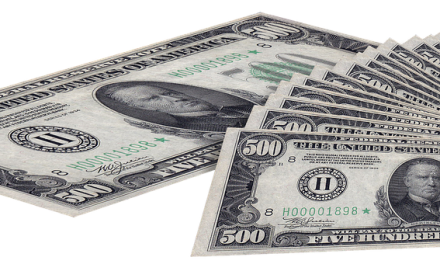Image by tommyzwartjes from Pixabay
The last thing you want as a business is for your company identity to be stolen. The trick to avoid such a travesty is to be trademarked by the United States Patent and Trademark Office (USPTO).
What a trademark will do for you: It will provide nationwide legal protection for your logo, name and design and even sound.
It will also prevent others who come along thinking they have the original idea or prevent people from confusing their idea with yours.
For protection abroad, seek trademarks in the countries in which you’ll do business.
It does cost you money to trademark. (See the USPTO list of fees.)
But if you don’t trademark, it will cost you a lot more.
Some people confuse the definition of trademark with a patent. Both are classified as intellectual property.
A trademark reminds people about your products and services. A patent is to prevent competitors from manufacturing your invention.
Google the term, trademark lawsuit, and you see millions of search results.
Though despicable, the patent trolling business is also mega problem.
It’s several years old, but patent-trolling data is eye-opening. Patent trolls cost companies an aggregate $29 billion in legal fees and settlements in 2011, according to a published report.
But just because you file for a trademark doesn’t mean you’ll get it. Comparatively, only a small percentage of trademarks are typically approved.
Why? Usually, the applicants submitted information about their companies that could be confused or mistaken with existing or pending trademarks.
As a business-performance consultant, I’m not a lawyer and every situation is different. So the following isn’t legal advice but is a primer to introduce you to the process.
Keep in mind four basic steps:
1. Be sure you’re entitled to the trademark.
You have to be certain your idea can’t be confused with another. There can’t be any similarity. Also bear in mind that ignorance will not defend you against a lawsuit.
In fact, should you lose, you’ll incur two salient costs – legal and having to rebrand your company.
So thoroughly research the government’s Search Trademark Database.
2. Choose a protectable trademark.
Not all names are created equally. So before researching trademarks, pick a distinctive name.
Don’t look for generic trademarks (e.g. table top or spreadsheet) because they’re not protectable.
You’ll have to show that Americans that your trademark indicates you’re the source, and not giving just a description of the product.
Here are the basic types of trademarks and levels of protection:
— Generic, which isn’t protectable.
— Descriptive, which describes your idea vis-à-vis just explaining what it is – you’ll only get trademark protection after you get what’s known as “secondary meaning,” or relevance in the marketplace.
— Suggestive, which is more highbrow than descriptive but it classifies your idea (e.g., Facebook).
— Arbitrary, which provides more protection than suggestive trademarks (e.g., Twitter).
— Fanciful, which provides the best protection with made up words (e.g., Spanx) over real words.
Spanx founder Sara Blakely went from a college-educated fax machine door-to-door salesperson to a billionaire. She reportedly said it took her a year of thinking of weird names and settled on Spanx after her research in the U.S. patent database showed it wasn’t taken.
She did most of the trademark footwork herself until she got an attorney for the “claims” portion of her application.
A trademark reminds people about your products and services. A patent is to prevent competitors from manufacturing your invention.
3. File as soon as possible with the USPTO.
Be sure to file as soon as you can –the earlier the better by filing an “Intent to Use” registration application.
You’ll have a much better chance at keeping your competitors at bay.
4. Remember there’s more footwork after you register.
Protect your asset. Actively monitor the marketplace for upstarts from similar uses of your name. You can do it yourself or hire a trademark monitoring service.
As you grow and if you develop new products or services, keep doing the necessary due diligence and filing new applications.
Should you want to offer related products under your original trademark, it still might be necessary to conduct clearance and submit new filings for your registration.
Take care of your assets. Be on guard against knockoffs.
If you don’t take such precautions, your brand will be diluted. You might also lose your brand if a competitor is aggressive and proactive.
From the Coach’s Corner, here are related articles:
You Have a Great Business Idea, but You’re Stuck in 1st Gear? — Budding entrepreneurs often have great ideas but many hit self-created stumbling blocks. The typical excuses and reasons are varied. They’re afraid of having their idea stolen. They’re indecisive about how to proceed. They’re not expert in management and operations. They’re unsure about the economy. Sound familiar? So nothing gets done – it’s called paralysis from analysis. You don’t boot your computer and your pen stays on your desk.
Risk Management – Lawyer Explains Basics in Protecting Intellectual Property — Entrepreneurs are well-advised to consider ways to avoid legal entanglements over their inventions and intellectual property.
6 Patent Tips to Protect Your Inventions, Intellectual Property — Whether you’re a new or existing business, take precautions to protect your inventions. Entrepreneurs are well-advised to consider ways to avoid legal entanglements over their inventions and intellectual property. If you don’t take steps to protect a valuable invention, you risk two possible consequences.
10 Tips for Hiring the Right Attorney for Your Business — In running a successful business, you typically need the services of three professionals — a good tax accountant or CPA, insurance agent and an attorney. Know that talent and skill levels are crucial for your success.
“A great trademark is appropriate, dynamic, distinctive, memorable and unique.”
-Primo Angeli
__________






